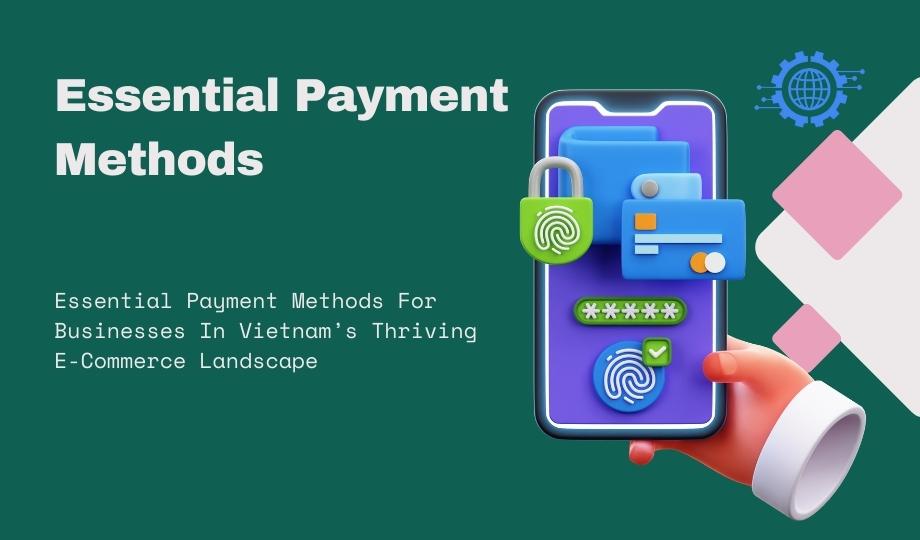As Vietnam emerges as a dominant player in Southeast Asia’s e-commerce arena, numerous companies are looking to tap into the opportunities presented by this dynamic economy of over 90 million people. However, navigating the complexities of doing business in Vietnam, especially when it comes to payment methods, can be a challenging endeavor.
On a regional scale, Southeast Asia (SEA) is well-positioned to lead the transition towards cashless payments and further innovations in the digital service ecosystem. With a projected consumer base of 623 million people by 2030, SEA is set to become the world’s fourth-largest economy, with the region expected to host the globe’s third-largest middle class by 2025.
Factors Driving the Economic Surge in Vietnam
Vietnam ranks among the most vibrant economies in SEA and is forecasted to be the fastest-growing economy over the next five years. The country’s gross domestic product (GDP) is expected to expand by an annual average of around 6% between 2018 and 2023.
This growth is fueled by several factors, including robust domestic consumption, continued foreign direct investment (FDI), and a burgeoning manufacturing sector. The rapid ascent of Vietnam’s middle class has led to an upsurge in mobile commerce, evident in the country’s e-commerce market, which is projected to reach US $15 billion by 2025, a significant leap from an estimated US $3 billion in 2018. This burgeoning e-commerce sector is driven by factors such as increased mobile device usage and growing internet penetration.
In this blog post, we’ll introduce you to the most prominent payment methods in Vietnam.
Key Payment Methods in Vietnam
E-commerce in Vietnam is experiencing tremendous growth, with e-commerce sales predicted to increase by over 19% annually through 2021, according to a recent report by eMarketer. Multiple factors are contributing to this rapid expansion, including the widespread use of mobile devices and the growing middle class.
Several payment methods have gained popularity in Vietnam, including:
Over the Counter Payment (OTC): The most common payment method in Vietnam, OTC involves a consumer receiving a QR code from a merchant and then making the payment at an authorized payment counter, typically a physical location.
Cash-on-Delivery (COD): COD payments constitute a significant portion of transactions in Vietnam, particularly for small purchases, making up around 19% of e-commerce transactions.
Cash: Despite government efforts to promote digital payments, cash remains the most widely used payment method in Vietnam. The ongoing COVID-19 pandemic did encourage some shifts towards digital payments.
E-wallets: E-wallets have gained popularity in Vietnam, with an estimated 28% year-over-year growth since 2021. Factors such as the rapid adoption of smartphones and mobile applications have been instrumental in this growth. Vietnam is currently home to over 40 e-wallet providers, including MoMo, which boasts over 23 million active users, and ZaloPay.
Prepay: Prepay involves paying for goods or services in advance, either online or offline. The prepaid card industry in Vietnam is expected to grow significantly.
Bank Transfers: Bank transfers account for 22% of e-commerce payments and come in two forms: interbank transfers and cross-border transfers. Popular cross-border payment providers in Vietnam include PayPal and Western Union.
Buy Now Pay Later (BNPL): BNPL is gaining traction in Vietnam as an easy-to-set-up payment method, particularly popular among young consumers. It offers interest-free installments and is used for smaller purchases.
Credit Cards: Credit cards, introduced in Vietnam in 1997, account for 15% of e-commerce payments. The number of credit cardholders in Vietnam has been steadily increasing, reaching 11 million in 2019.
Local Payment Methods and Challenges for Businesses
As e-commerce in Vietnam continues to grow, businesses must address challenges associated with cross-border transactions. One significant concern is the risk of fraud, given that cross-border customers may lack the same level of protection as domestic transactions. This necessitates stringent customer screening and identity verification, processes collectively known as KYC (know your customer).
Aside from financial costs, reputational risks linked to cross-border fraud should not be underestimated. A single instance of fraud can tarnish a company’s reputation and hinder future business.
While challenges like logistics persist in second-tier and rural cities, Vietnam’s rapidly growing market is prompting swift solutions to these issues.
How Web Technology Expert Assists with Vietnam’s Payment Methods
Web Technology Expert’s platform is designed to accommodate a variety of payment options, including those relevant to Vietnam. Our payment platform offers a one-stop integration that connects to multiple payment gateways and diverse local payment choices simultaneously. With our developer-friendly payment integration approach, businesses can adapt to different models, such as e-commerce and digital marketplaces.
In addition to facilitating seamless pay-ins and pay-outs, our platform helps businesses enhance their checkout conversions by providing a tailored checkout environment, whether it’s payment options, language, or currency. A fully customizable front-end and top-tier CXO dashboards enable you to maintain your brand’s design identity while efficiently managing refund claims and analyzing transaction failures.
Our checkout solutions can be seamlessly integrated into your website or app, ensuring a hassle-free shopping experience for your customers. We prioritize data security and ensure compliance with PCI DSS standards to protect payments and minimize the risk of fraud.

